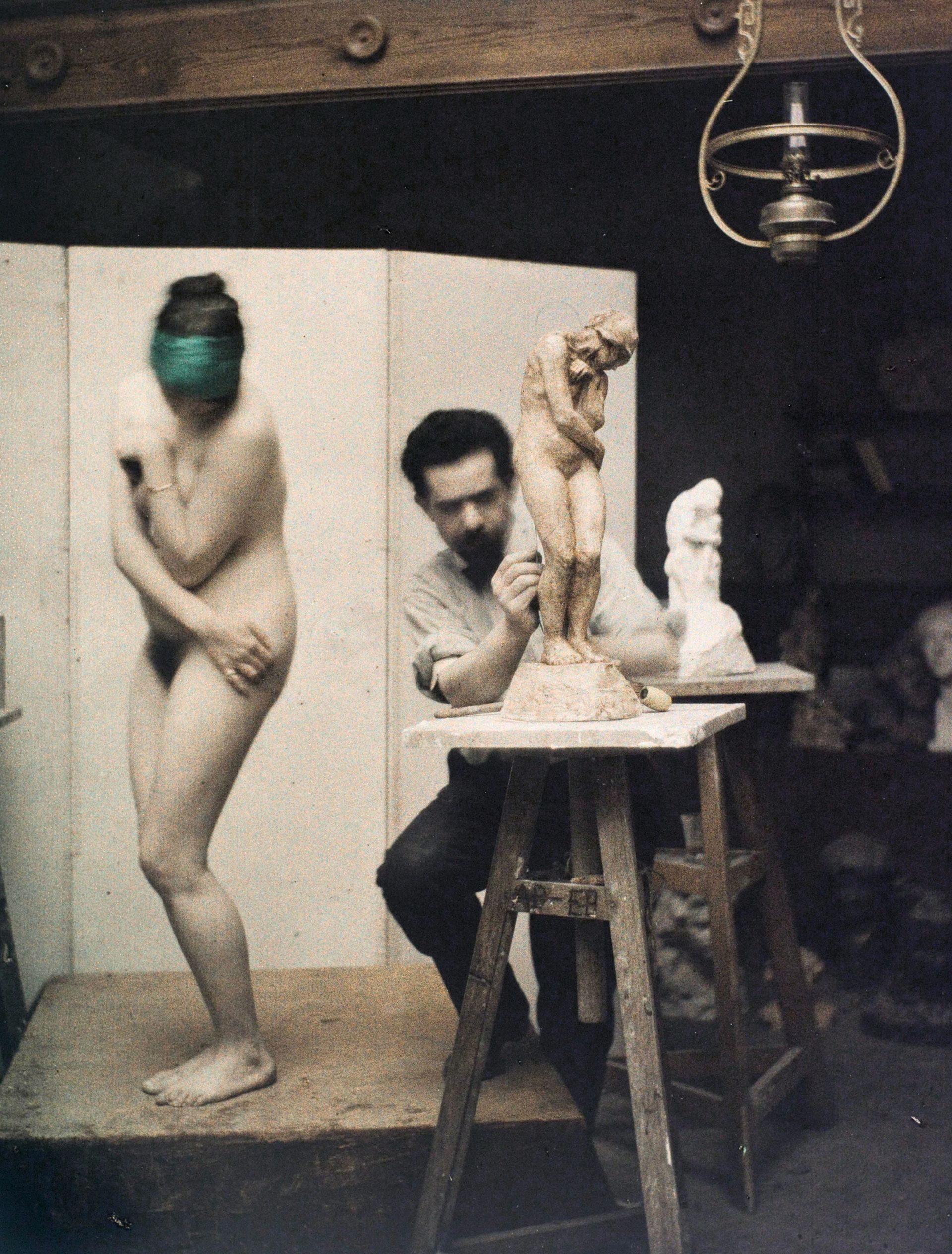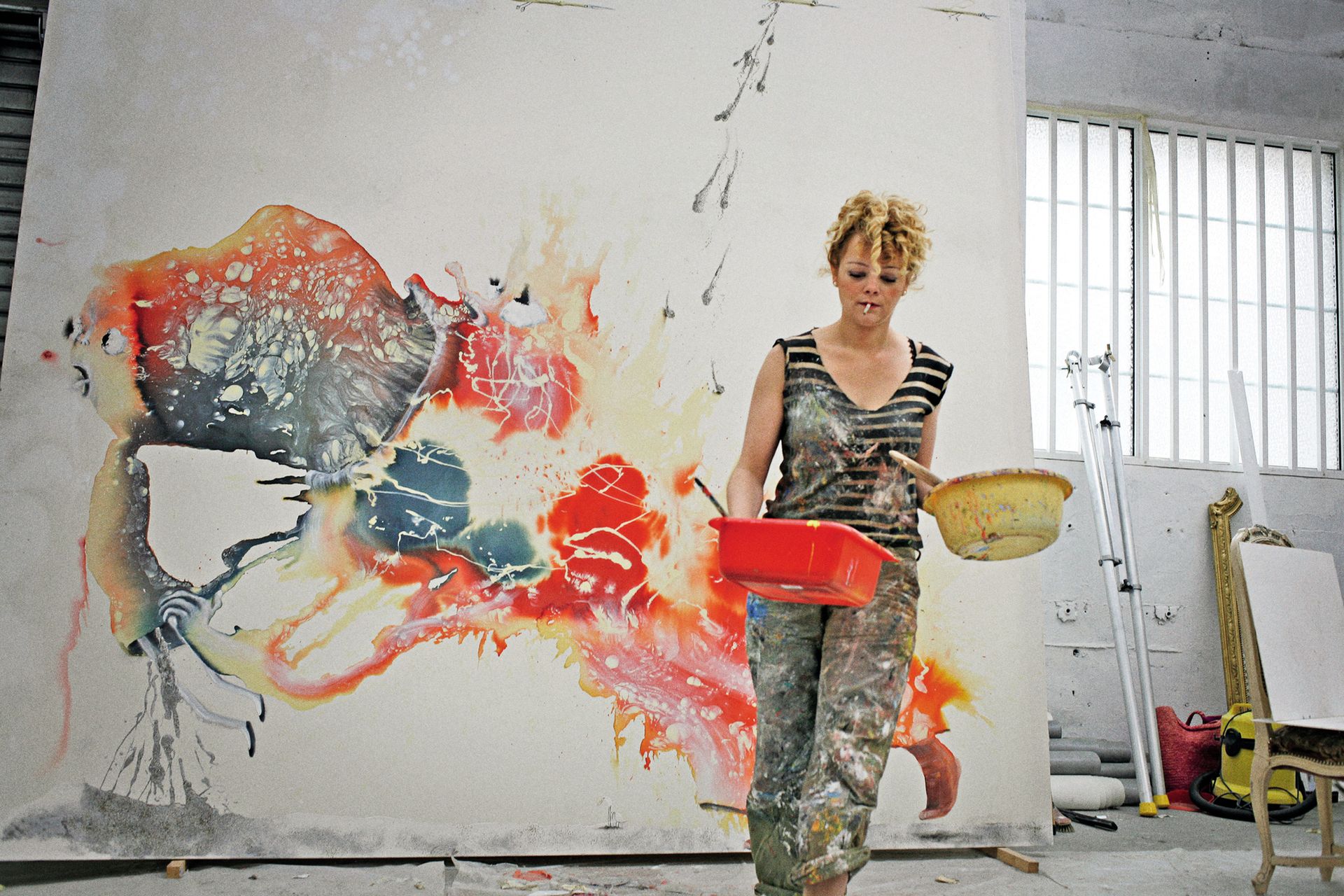We are in the atelier of Claude Monet in Giverny around 1920. A battered sofa and a table crowded with objects stand against a backdrop of two immense canvases depicting the artist’s beloved water lilies. The Impressionist painter, with palette in hand, is choosing a brush. The scene was shot by Henri Manuel, an official photographer for the French government.

In 1986, Charles Matton immortalised a corner of Francis Bacon’s chaotic studio. Strewn with newspaper sheets, cans of paint, a heap of rags, clusters of brushes and with swipes of colour on the walls, the room seems to have been transformed into a work of art.
Another artist, another environment. With neon strip lights, white walls, paint tubes, spray bottles and the green face of the Hulk, the New York studio of Jeff Koons was photographed in 2005 by Gautier Deblonde.

Painterly tradition has already given us images in which artists, from Jacques-Louis David to Gustave Courbet, picture themselves in the studio. But the camera lens functions rather like the eye of a voyeur spying on the artist’s intimate space. The photographer’s gaze can be discreet or invasive, documentary or critical, opening the doors to a world that maintains a certain bohemian flavor.
The exhibition In the Studio: the Artist Photographed from Ingres to Jeff Koons, which opened earlier this month at the Petit Palais in Paris (until 17 July), shows how photography has contributed to this myth from its earliest beginnings.

“It is interesting to note that the term ‘atelier’ entered the dictionary almost at the same time as photography was officially born,” say the curators Delphine Desveaux, Susana Gállego Cuesta and Françoise Reynaud. “The coincidence is significant. If the view of the artist’s studio was already a genre in painting, it was photography that would popularise that image.”
A photograph of the studio is different from a painting or drawing because “it was created by someone other than the artist and because thousands of greedy eyes could potentially lie behind the lens,” the curators say. The exhibition includes more than 400 photographs, early and modern, in black and white and in colour.
The first section in the show, The Artist Enthroned, traces the birth of the genre to artists’ and photographers’ shared desire to highlight their own creative power. The second part, Life in the Studio, contrasts the hive of activity populated by models, collectors, fellow artists and pupils with the idea of the studio as a place for solitary reflection. Finally, The Studio as Workshop for the Eye, explores the photographer’s role in appropriating spaces and making the objects within them speak.


